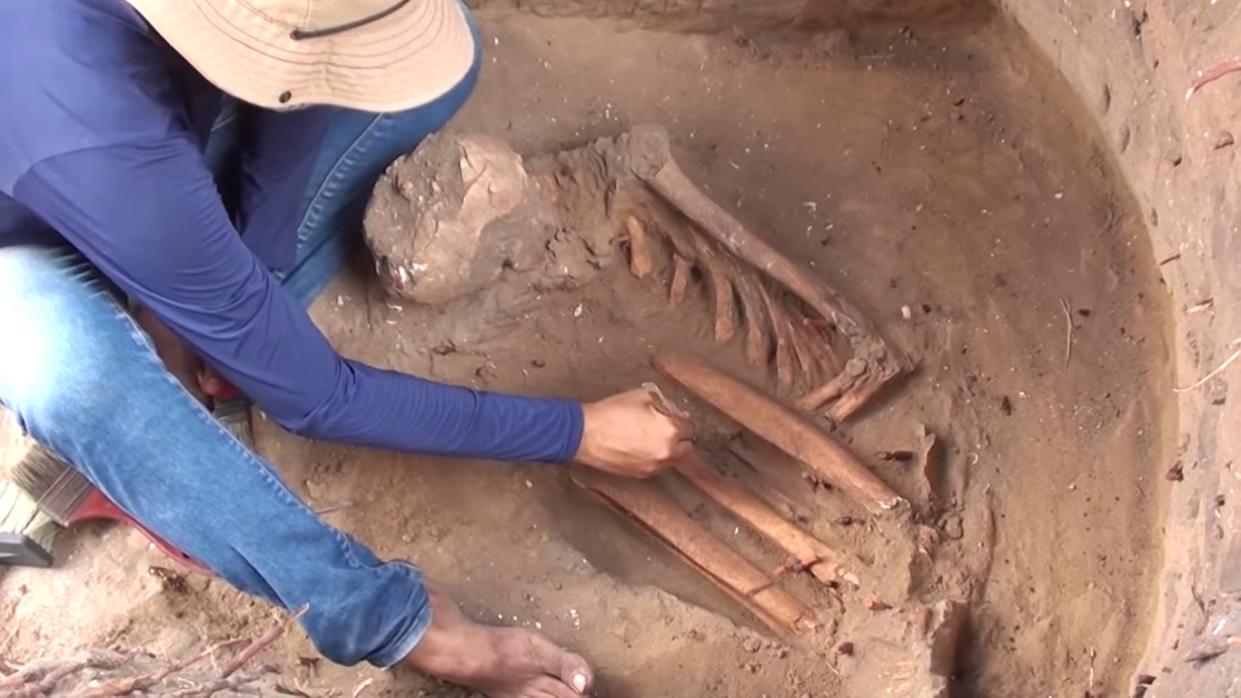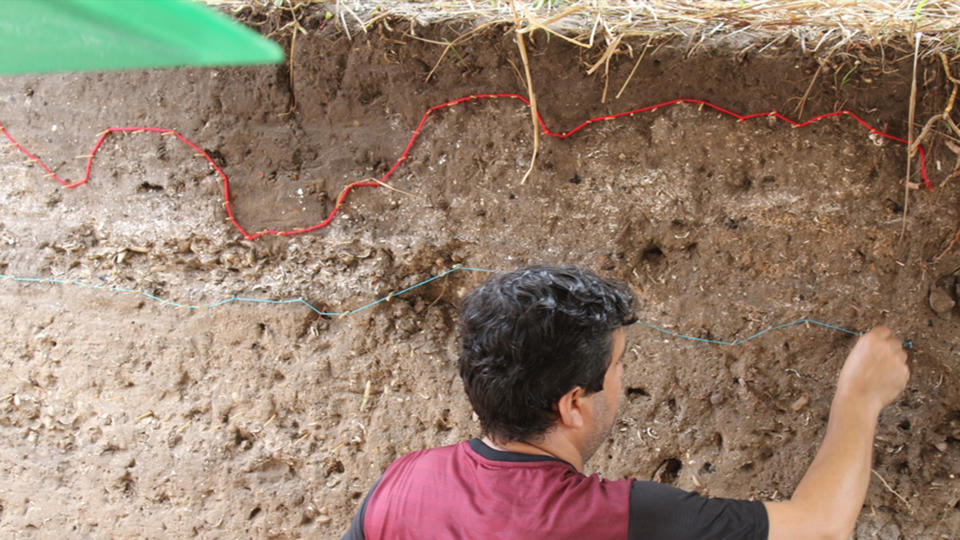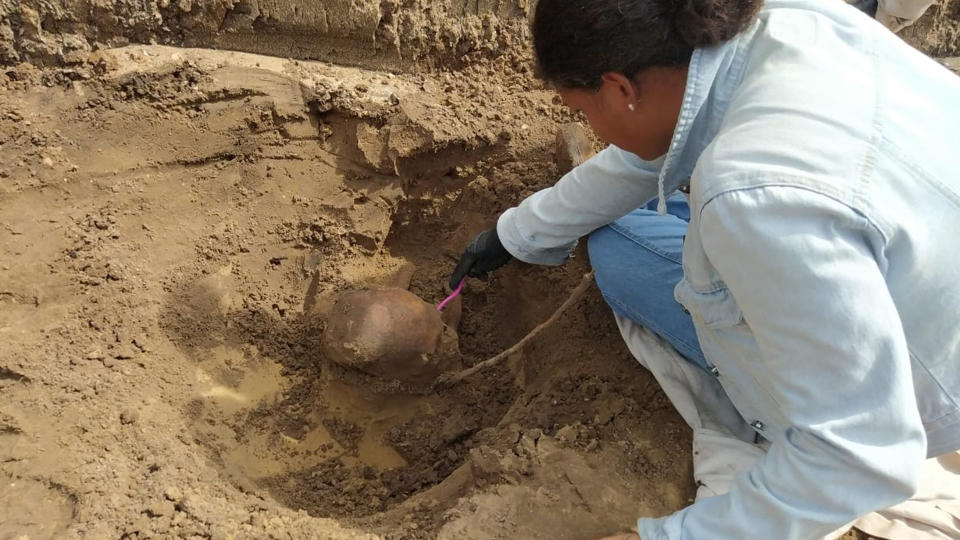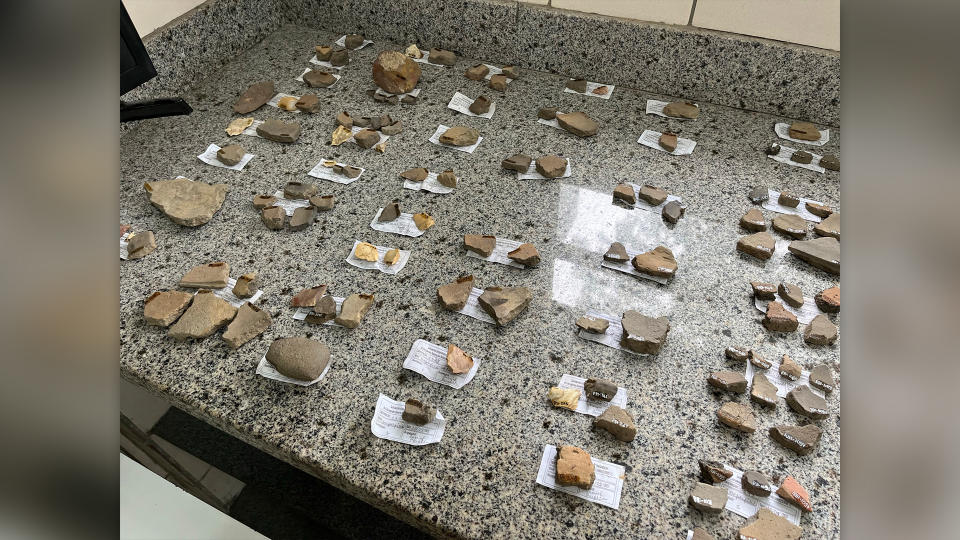10,000-year-old burials from unknown hunter-gatherer group discovered in Brazil

Archaeologists in Brazil have discovered a large Indigenous cemetery housing over 40 skeletons and thousands of grave goods from as far back as 10,000 years ago.
The earliest human remains appear to be from a previously unknown ancestral community predating the Sambaquians, coastal hunter-gatherers who historically lived in the area. The finding is the oldest record of humans in the northeastern Maranhão state.
The cemetery, which holds human remains from different periods, was unearthed in São Luís, the capital and largest city in Maranhão, ahead of construction work for a government housing program. The burials were found on Farm Rosane, which subsequently became an urban archaeological site between two busy avenues.

Archaeologists already knew that the São Luís area, also called Upaon-Açu, meaning "big island" in the Tupí-Guaraní Indigenous languages, held traces of prehistoric human activity. For instance, a prehistoric jawbone was discovered at Farm Rosane in the 1970s and other artifacts found in São Luís have dated to 6,000 years ago, Wellington Lage, the lead archaeologist of the recent excavations, told Live Science. The remains were attributed to the Sambaquian peoples. This group relied on marine resources and built shell mounds with leftover food refuse that reached up to 100 feet (30 meters) high.
The latest excavation, which began in June 2019, initially revealed a variety of fragmented ceramics and stone tools. Then, during the peak of the COVID-19 pandemic in 2020, archaeologists found the first skeleton about 24 inches (60 centimeters) below the surface.

Since then, the team has found a total of 43 skeletons and around 100,000 artifact fragments from at least four different sediment layers, suggesting the site was occupied by people in at least four distinct periods spanning up to 8,500 years.
Related: Humans were in South America at least 25,000 years ago, giant sloth bone pendants reveal
According to Lage, the skeletons are of short stature, with the tallest being 5 feet, 3 inches (1.6 m). Most of them belong to adult men, and there are remains of two children. "Initial analysis suggests that these were individuals involved in strenuous physical activities, evidenced by bone marks indicating load and extensive mobility," Lage told Live Science.

The deepest-buried skeleton was discovered nearly 7 feet (2 m) underground. The archaeologists dated it using a technique called optically stimulated luminescence (OSL) dating. This technique determines when certain minerals near the bones were last exposed to heat or sunlight. The results pointed to a timeframe between 7,000 and 10,000 years ago, revealing a possible, mysterious pre-Sambaquian population in the region.
"The findings are the oldest date we have in Maranhão state, from the middle and beginning of the Holocene period [11,700 years ago to present], being representative of world history at that time when the Americas were populated," Sara Batista, an archaeologist at Brazil's National Historical and Artistic Heritage Institute (IPHAN) who was not involved in the excavation, told Live Science.
RELATED STORIES
—2,500-year-old burials of 3 people discovered in a cave in Mexico
—The 1st Americans may have arrived by a sea ice 'highway'
To validate the dating of the different soil layers Lage will send samples to the U.S. laboratory Beta Analytic for radiocarbon dating in February so the team can establish when the following groups occupied the site: pre-Sambaquian, Sambaquian, Tupi (Amazonian cultures) and Tupinambás — a Tupi subgroup that occupied the Atlantic coast and had contact with Europeans after 1500.
The Fieldwork at Farm Rosane is expected to be done within six months. The construction company, in partnership with IPHAN and the Federal University of Maranhão, plans to build a curation and storage center to house the archaeological finds, including a research laboratory and a museum.

